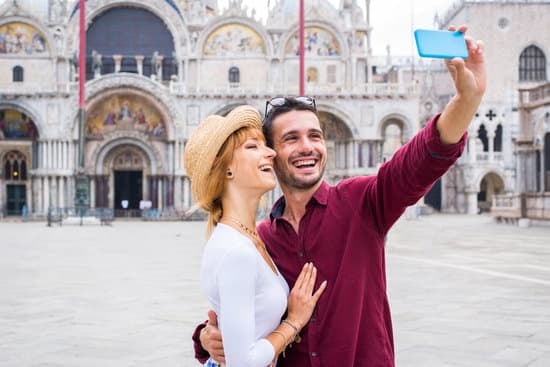Italy, with its stunning landscapes, rich history, and delectable cuisine, is a dream destination for many travelers. If you are planning a trip from the United States to Italy, there are several things to consider in order to make your journey a smooth and memorable one.
First and foremost, careful planning and research are crucial when traveling to Italy from the US. With so much to see and do, it is important to create an itinerary that suits your interests and allows for flexibility. From exploring ancient ruins in Rome to cruising along the canals of Venice, each region has its own unique charm. By doing your homework ahead of time, you can make the most of your time in Italy.
Another important aspect to consider is understanding travel documents and entry requirements. It is essential that you have the necessary travel documents, such as a valid passport with at least six months’ validity remaining. Additionally, US citizens do not require a visa for stays in Italy shorter than 90 days. However, it is always best to check the latest entry requirements before your trip.
Overall, traveling from the US to Italy is an exhilarating experience filled with endless possibilities. With careful planning and thorough research of necessary documents and entry requirements, you can ensure a stress-free adventure in this captivating country. So pack your bags and immerse yourself in all that Italy has to offer.
Understanding Travel Documents and Entry Requirements
Necessary Travel Documents
When traveling to Italy from the US, it is important to ensure that you have all the necessary travel documents. The most important document is a valid passport. Make sure that your passport has at least six months of validity remaining beyond your planned departure date from Italy. It is also recommended to make a photocopy or take a picture of your passport as a backup.
Entry Requirements for US Citizens
US citizens do not need a visa for stays in Italy less than 90 days for tourism or business purposes. However, it is crucial to remember that each traveler must meet the entry requirements set by Italian authorities upon arrival. This includes having a round-trip ticket and proof of sufficient funds for the duration of your stay. It is advisable to carry these documents with you during your trip.
It’s worth noting that customs regulations in Italy are fairly strict. Make sure you are aware of what items are prohibited or restricted before traveling, such as certain food products or cultural artifacts. Failure to comply may result in fines or other penalties. It’s always a good idea to check with the embassy or consulate of Italy in the US for the latest information on entry requirements and any specific regulations that may apply to your situation.
Timezone and Weather Differences
Italy is located in the Central European Time Zone, which is six hours ahead of Eastern Standard Time. This time difference may affect your travel plans and daily routine, so it’s important to adjust your schedule accordingly. Jet lag can also be a factor when traveling long distances, so give yourself some time to rest and adjust to the new time zone.
When it comes to weather, Italy experiences a Mediterranean climate with distinct seasonal variations. The summer months from June to August are generally hot and dry, especially in the southern regions.
Spring (April to May) and autumn (September to October) offer milder temperatures and are considered the best times to visit, as the weather is pleasant for outdoor activities and sightseeing. Winter (November to February) can be quite chilly in most parts of Italy, with colder temperatures and occasional snowfall in the northern regions.
To plan your activities accordingly, it’s essential to check the current weather conditions for each destination you plan on visiting in Italy. Be prepared for potential weather changes during your trip by packing versatile clothing options that can accommodate different temperatures and climates throughout your itinerary.
| City | Average Temperature (°C) | Average Rainfall (mm) |
|---|---|---|
| Rome | Jan: 9 / Jul: 28 | Jan: 30 / Jul: 4 |
| Florence | Jan: 7 / Jul: 31 | Jan: 48 / Jul: 20 |
| Venice | Jan: 2 / Jul: 27 | Jan: 30 / Jul: 47 |
Language and Cultural Differences
When traveling to Italy from the US, it is important to be aware of the language and cultural differences you may encounter. While English is widely spoken in tourist areas, it can still be helpful to learn a few basic Italian phrases to navigate daily interactions. Understanding and respecting Italian cultural norms and customs will also enhance your travel experience.
Language Barrier and Useful Italian Phrases
Although many Italians speak English, especially those working in the tourism industry, it can be beneficial to learn some common Italian phrases before your trip. This will not only help you communicate with locals but also show respect for their culture. Some useful phrases to know include greetings (buongiorno – good morning; buonasera – good evening), basic questions (dov’è il bagno?
– where is the bathroom? ), and polite expressions (per favore – please; grazie – thank you). Having a pocket-sized phrasebook or using language-learning apps on your phone can be handy when navigating unfamiliar situations.
Cultural Norms and Customs
Italian culture has its own unique norms and customs that may differ from those in the US. For example, Italians place great importance on personal appearance, so it is common to see well-dressed individuals even during casual outings. Dressing neatly and avoiding overly casual attire will help you blend in with the local crowd.
Additionally, Italians often participate in local rituals and traditions, such as celebrating festivals or enjoying an afternoon siesta. Observing these cultural practices will not only help you respect local customs but also give you a deeper appreciation for the country’s rich heritage.
Understanding and respecting language barriers as well as familiarizing yourself with cultural norms and customs will greatly enhance your travel experience in Italy. By making an effort to learn some basic Italian phrases and adapting to local practices, you’ll have a more immersive experience that allows you to connect with locals on a deeper level. Additionally, blending in with the Italian sense of fashion and respecting cultural traditions will ensure a positive interaction with the vibrant Italian culture.
Health and Safety Precautions
When traveling to Italy from the US, it is important to prioritize your health and safety. Taking necessary precautions can help ensure a smooth and enjoyable trip. In this section, we will discuss some important health and safety considerations for your journey.
Firstly, it is advisable to check if you need any vaccinations before traveling to Italy. The Centers for Disease Control and Prevention (CDC) recommends that travelers be up to date on routine vaccines such as measles, mumps, rubella (MMR), diphtheria, pertussis, tetanus (DPT), and influenza. Additionally, depending on the specific region of Italy you plan to visit or the activities you will engage in, you may need additional vaccines such as those for hepatitis A or B.
In terms of general safety, it is crucial to be aware of your surroundings and take precautions against common issues like pickpocketing. Popular tourist destinations in Italy can be crowded, making it easier for thieves to operate. To reduce the risk of theft, keep your belongings secure at all times and avoid carrying large amounts of cash. Additionally, be cautious when using public transportation – watch out for unattended bags and keep an eye on your personal items.
Here are some key tips to help you stay safe during your trip:
- Be cautious when using public Wi-Fi networks as they may not be secure.
- Familiarize yourself with emergency numbers in Italy (such as 112).
- Keep a copy of important documents like passports in a safe place.
- Stay hydrated and protect yourself from the sun by wearing sunscreen and a hat.
By following these health and safety precautions, you can enjoy a worry-free experience while exploring all that Italy has to offer.
| Health Precautions | Safety Tips |
|---|---|
| – Ensure routine vaccinations are up to date | – Be aware of surroundings and avoid crowded areas |
| – Consider additional vaccinations depending on region or activities | – Keep belongings secure and avoid carrying large amounts of cash |
| – Stay hydrated and protect yourself from the sun | – Be cautious when using public transportation and watch out for unattended bags |
| – Familiarize yourself with emergency numbers in Italy | – Avoid using public Wi-Fi networks that may not be secure |
Currency and Financial Considerations
When planning a trip to Italy from the US, it is important to consider currency and financial considerations. Understanding the currency used in Italy and knowing the best ways to exchange money can help ensure a smooth and hassle-free travel experience.
Currency Used in Italy
The official currency used in Italy is the Euro (€). It is advisable to have some Euros on hand for immediate expenses upon arrival, such as transportation or small purchases. It is also recommended to notify your bank that you will be traveling to Italy so they do not block your credit or debit card transactions.
Exchanging Money
There are several options for exchanging money in Italy. One option is to exchange currency at a local bank or post office, which typically offer competitive rates. It is important to compare exchange rates and fees before making a decision. Another option is to use ATMs, which are widely available throughout Italy. However, it is important to check with your bank regarding any potential fees for using international ATMs.
Using Credit Cards
Credit cards are widely accepted in major cities and tourist areas in Italy. Visa and Mastercard are the most commonly accepted cards, while American Express may have limited acceptance. However, it is always recommended to carry cash as well, especially when visiting smaller establishments or rural areas where card payments may not be accepted.
It is important to keep an eye on your credit card throughout your trip and only use reputable ATMs and establishments for safety reasons. Additionally, inform your credit card company of your travel plans to avoid any issues with blocked transactions.
Transportation Options within Italy
Italy offers a variety of transportation options for travelers to navigate the country easily. Whether you prefer the convenience of public transportation or the flexibility of rental cars, there are options to suit every preference. Here are some transportation options to consider when traveling within Italy:
- Trains: Italy has an extensive and efficient train network, making it a popular choice for getting around the country. The trains in Italy are known for being punctual and comfortable, offering a scenic way to travel from one city to another. Trenitalia is the main train operator in Italy, offering high-speed trains like Frecciarossa and regional trains that connect smaller towns.
- Buses: Buses are another reliable option for traveling between cities or exploring rural areas in Italy. Companies such as FlixBus and ItaloBus offer routes to various destinations, including popular tourist spots not easily accessible by train. Buses can be more cost-effective than trains and are a great option for budget travelers.
- Rental Cars: Renting a car gives you the freedom to explore Italy at your own pace and venture off the beaten path. However, driving in big cities like Rome or Florence can be challenging due to heavy traffic and limited parking spaces. If you choose to rent a car, it is advisable to familiarize yourself with Italian traffic laws and regulations beforehand.
- Ferries: If you plan on visiting islands such as Sicily, Sardinia, or Capri, ferries are an excellent mode of transport. Ferries offer stunning views of the coastlines while providing convenient connections between islands and mainland Italy.
- Walking or Cycling: Many Italian cities have compact city centers that are best explored on foot or by bike. This allows travelers to soak up the local ambiance at their own pace while discovering hidden gems along narrow streets and charming alleyways.
When using public transportation in Italy, it is essential to validate your tickets before boarding trains or buses. Failure to do so may result in fines. Additionally, consider purchasing a transportation pass like the Roma Pass in Rome or Firenze Card in Florence, which offers unlimited access to public transportation as well as discounted entry to attractions.
Overall, understanding the transportation options available in Italy can greatly enhance your travel experience. Whether you decide to rely on trains, buses, rental cars, or a combination of these modes of transport, planning ahead and being aware of their pros and cons will ensure a smooth and enjoyable journey throughout the country.
Must-See Destinations and Attractions
Italy is known for its rich history, stunning architecture, and beautiful landscapes. When planning a trip to Italy from the US, it’s important to consider the must-see destinations and attractions that you won’t want to miss. From iconic cities to picturesque countryside, there is something for everyone in Italy.
One of the most popular destinations in Italy is Rome, the capital city. Known as the Eternal City, Rome is a treasure trove of ancient ruins and historical sites. The Colosseum, Roman Forum, and Pantheon are just a few of the famous landmarks that tourists flock to see. Strolling through the streets of Rome also gives visitors a chance to marvel at Renaissance and Baroque architecture, including the grandeur of St. Peter’s Basilica and the Vatican Museums.
Florence is another must-see destination in Italy, particularly for art enthusiasts. The birthplace of the Renaissance, Florence is home to world-renowned museums such as the Uffizi Gallery and the Accademia Gallery which houses Michelangelo’s David statue. The city itself is like an open-air museum with its beautiful piazzas, medieval churches, and charming streets lined with boutique shops and cafes.
No visit to Italy would be complete without experiencing Venice’s unique charm. This city built on water captivates visitors with its canals, gondolas, and romantic ambiance. Exploring Venice means wandering through its labyrinthine streets and crossing countless bridges that connect over 100 small islands. Visitors can also visit famous landmarks such as St. Mark’s Square with its remarkable basilica or take a boat ride along the Grand Canal for breathtaking views of stunning palazzos.
| Destination | Main Attractions |
|---|---|
| Rome | Colosseum, Roman Forum, St. Peter’s Basilica, Vatican Museums |
| Florence | Uffizi Gallery, Accademia Gallery (housing Michelangelo’s David), Florence Cathedral (Duomo) |
| Venice | St. Mark’s Square and Basilica, Grand Canal, Rialto Bridge, Doge’s Palace |
These destinations are just the tip of the iceberg when it comes to exploring Italy. From the breathtaking Amalfi Coast to the historical city of Pompeii and the picturesque Tuscan countryside, there is so much more to discover. By including these must-see destinations in your itinerary, you can ensure an unforgettable experience during your trip from the US to Italy.
Food and Dining Etiquette
Italy is renowned for its rich culinary culture, and experiencing authentic Italian food is often a highlight for travelers. Understanding the local dining etiquette will not only enhance your enjoyment of meals but also show respect for Italian customs. Here are some tips to navigate the food and dining scene in Italy.
- Italian Culinary Culture: One of the most important aspects of Italian cuisine is simplicity and quality ingredients. Italians take pride in using fresh, locally sourced produce, so be prepared to indulge in flavors that highlight the natural taste of each ingredient. Traditional dishes like pasta, pizza, risotto, and gelato are must-tries during your trip to Italy.
- Dining Customs: Meals in Italy are multi-course affairs that typically begin with antipasti (appetizers), followed by a primo (first course) such as pasta or risotto, a secondo (main course) featuring meat or fish, and finally dolce (dessert). It is common to find regional specialties on menus, so don’t hesitate to ask the waiter for recommendations.
- Tipping Etiquette: Unlike some countries where tipping is customary, tipping in Italy is not as prevalent. A service charge called “coperto” may already be included in the bill at restaurants or cafés. However, leaving some spare change as a gesture of appreciation is always welcomed.
- Making Reservations: In busy tourist areas or popular restaurants, it is advisable to make reservations in advance to guarantee a table. Italians tend to eat dinner later than Americans, usually after 8 pm.
4 Ordering Coffee: Coffee plays an integral role in Italian culture, and there are certain customs to follow when ordering it. Italians usually have their coffee while standing at the counter rather than sitting at a table. Common types include espresso (short black), cappuccino (espresso with steamed milk), and macchiato (espresso with a small amount of milk).
Remember, dining is more than just eating in Italy; it’s a cherished social activity. Embrace the Italian way of savoring food, enjoying leisurely meals, and engaging in conversations with locals. By respecting the food and dining etiquette, you will have an immersive culinary experience during your trip to Italy from the US.
Packing Essentials and Fashion Tips
When preparing for a trip to Italy from the US, it is important to pack wisely and consider the varying weather and activities you will engage in. Here are some essential items to pack for your trip:
- Comfortable Shoes: Italy is known for its cobblestone streets and hilly terrain, so it is crucial to pack comfortable shoes that are suitable for walking long distances. Opt for sturdy sneakers or walking shoes that provide good support.
- Appropriate Clothing: Italy has a diverse climate, with regions ranging from hot summers to cold winters. Pack lightweight, breathable clothing for summer trips and layering options such as sweaters and jackets for colder months. It is also advisable to have a scarf or shawl on hand, which can be useful when visiting churches that require modest attire.
- Travel Adapter: Electrical outlets in Italy typically use 220 volts of electricity, which may differ from the standard voltage in the US. Make sure to bring a travel adapter to charge your electronic devices safely.
- Day Bag: A small day bag or backpack is essential for carrying your essentials during sightseeing trips. This should include items like a water bottle, sunscreen, sunglasses, a map or guidebook, and any necessary medications.
- Travel Documents: Don’t forget to bring all necessary travel documents, including your passport, visa (if applicable), flight itinerary, hotel reservations, and any other relevant paperwork.
In addition to packing essentials, it’s worth considering fashion tips that will help you blend in with the Italian sense of style:
- Dress Smartly: Italians generally prioritize style and put effort into their appearance even in casual settings. Opt for well-fitted clothing rather than oversized or sloppy outfits.
- Avoid Athletic Wear: Although comfortable athletic wear may be common in the US for everyday activities like running errands or going to the gym, it is less prevalent in Italy outside of sporting contexts. Instead, choose stylish casual wear that is appropriate for various situations.
- Accessorize: Italians pay attention to accessories, so consider bringing items like scarves, hats, or statement jewelry to elevate your outfits.
- Be Respectful: When visiting religious sites or upscale establishments, dress more formally and avoid wearing clothing with offensive words or images.
By packing essentials and following these fashion tips, you will be well-prepared for your trip to Italy and able to fully immerse yourself in the local culture. Remember to check the weather forecast before departure and make adjustments accordingly. Bon voyage.
Conclusion
In conclusion, planning and careful consideration of various factors can greatly enhance your trip to Italy from the US. Throughout this article, we have explored important aspects such as travel documents, time zone and weather differences, language and cultural differences, health and safety precautions, currency and financial considerations, transportation options within Italy, must-see destinations and attractions, food and dining etiquette, as well as packing essentials and fashion tips.
By taking these factors into account, you can ensure a smooth and enjoyable experience in Italy.
One of the key takeaways from this article is the significance of thorough planning and research before your trip. Understanding the necessary travel documents and entry requirements will prevent any last-minute hassles at customs. Being aware of the time zone difference between the US and Italy will help you adjust to the new environment more easily.
Additionally, familiarizing yourself with basic Italian phrases and cultural norms will allow for smoother communication with locals. Moreover, following health precautions and practicing general safety tips will contribute to a worry-free vacation.
Furthermore, it is important to consider financial aspects such as currency exchange rates and potential fees when using credit cards or ATMs in Italy. Researching transportation options within Italy can save you time and money during your trip. Exploring must-see destinations like Rome, Florence, and Venice will provide opportunities for unforgettable experiences. Finally, embracing Italian culinary culture by trying traditional dishes while adhering to dining etiquette will surely enhance your overall enjoyment.
Frequently Asked Questions
What do Americans need when traveling to Italy?
When traveling to Italy, Americans need a few essential items to ensure a smooth trip. Firstly, they will need a valid passport that is not within six months of expiration. Additionally, it is highly recommended for Americans to have travel insurance to cover any unforeseen incidents or medical emergencies during their stay in Italy.
Having an international driving permit can be useful if one plans on renting a vehicle and exploring the country by car. It is also essential to have a power adapter as Italy uses different electrical outlets than the United States. Lastly, Americans should familiarize themselves with the Italian language basics or carry a phrasebook for effective communication.
What I need to do before traveling to Italy?
Before traveling to Italy, there are several important preparations that need attention. To start, Americans should check the validity of their passports and make sure it will not expire within six months after their planned return date from Italy. It is also advisable to register with the U.S. Department of State’s Smart Traveler Enrollment Program (STEP) to receive up-to-date information and assistance in case of emergencies while in Italy.
Researching and planning an itinerary is crucial; understanding which cities and attractions one would like to visit ensures maximum enjoyment of their time in Italy. Furthermore, it is recommended to learn some basic Italian phrases or take language classes before departure to enhance the travel experience.
How much cash should I bring to Italy?
The amount of cash one should bring to Italy depends on various factors such as personal spending habits, accommodation choices, and planned activities. However, carrying too much cash can be risky due to potential theft or loss during travel. As many places in Italy accept credit cards, having access to multiple means of payment is advisable for convenience and safety reasons.
It is beneficial for travelers to inform their bank about their upcoming trip to avoid any issues with card usage abroad due to suspected fraudulent activity. Additionally, carrying a decent amount of Euros in smaller denominations allows for easy transactions at local establishments that may not accept cards or have minimum spending requirements. It is often recommended to bring about 50-100 Euros per day for meals, small purchases, and unforeseen expenses, but credit cards and ATMs are widely accessible throughout Italy, providing additional financial flexibility.

I’m a passionate traveler, writer, and Italophile. My fascination with Italy’s history, art, and culture has led me on countless adventures across the Italian landscape. Through “I Live Italy,” I share my love for this extraordinary country and aims to inspire others to explore its boundless beauty.





